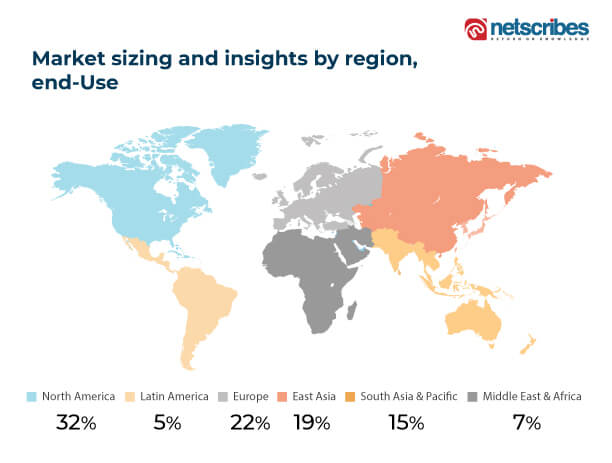HIGHLIGHTS
- Cloud backup and recovery are currently reshaping the landscape of Business Process Outsourcing (BPO) by ensuring data security and reducing downtime.
- The adoption of multi-cloud strategies is presently on the rise, offering flexibility and performance optimization for BPOs.
- Cloud-native backup and disaster recovery solutions are gaining prominence as organizations increasingly transition to cloud-only environments.
- IoT devices are currently transforming disaster recovery processes by collecting and processing data at the network's edge, making them a vital aspect of BPO operations.
Cloud backup is a method of offsite data storage. It is a virtual external hard drive or NAS that stores a copy of critical files and data. Its primary goal is to mitigate data loss in the event of a system failure or malware attack. A secondary server or external data storage system is typically referred to as an offsite location. These are hosted by a cloud storage service provider, who charges the backup customer based on the services used. These include the amount of storage space used, number of devices, file size, number of times the cloud is accessed, etc.
The cloud computing market is projected to reach USD 1,125.8 Bn by 2027 and is anticipated to grow at a CAGR of 19.8% between 2019-2027


Cloud backups are increasingly being used for effective data backup by medium and small businesses, as well as larger enterprises. Online backup services are used by large corporations as an additional method of data backup. Cloud backup enhances a company’s data protection strategy without putting additional strain on its in-house IT team.
Businesses choose cloud backup to keep files and data accessible in the event of a system failure, outage, or natural disaster. Cloud backup for business works by copying and storing files from one server to another in a different physical location. Depending on its needs, a company can back up some or all server files.
Customers typically use a web browser or a service provider’s control panel to back up and restore their data and apps. Many organizations today require cloud server backup because they store most applications on cloud servers and all their business-critical data.
The top 6 cloud backup providers hold more than 40% of the market share in the cloud backup industry in 2022

The substantial adoption of omni-cloud over multi-cloud is boosting the adoption of cloud services among BPOs.
As new and innovative services become more available in today’s ever-changing, highly competitive business climate, many businesses, from small start-ups to large corporations, choose to outsource processes.
In general, enterprises use BPO in two areas
- Back-office operations: Back-office BPO refers to a company that outsources its core business support operations such as accounting, payment processing, IT services, human resources, regulatory compliance, and quality assurance to outside professionals.
- Front-office operations: Front-office BPO tasks majorly include customer-related services such as sales, tech support, and marketing.
Cloud backup is increasingly fulfilling the automation requirements in BPO processes
- Cloud backup is automatic: Cloud-based backup systems automate the process of backing up data, allowing employees to focus on other aspects. This also eliminates the need to train an increasing number of employees on how to properly back up various types of files, as well as monitor them to ensure that guidelines are followed, and errors are avoided.
- Cloud backup is securely off-site: More than 40% of businesses never recover from a natural disaster, according to FEMA (U.S. Department of Homeland Security). Cloud backup can help ensure that outsourcing service providers do not become a statistic.
- Reduces downtime: When all the data is stored in the cloud, there is no need to search for physical storage locations and spend time searching for information. The recovery process is built in and testable at any time, outsourcing service providers can anticipate exactly how long it will take to get everything back up and running in the event of data loss.
- Easy access to backed-up data from anywhere: Companies can restore lost data from anywhere in the world using cloud-based backup systems.
North America was the largest market in 2022 holding more than 32% of the overall business process outsourcing market.
Business process outsourcing is expected to grow at a CAGR of 6.48% in the next five years. Most revenue will be generated in the United States in 2023, however, APAC will be the fastest-growing region in the next five years. The business process outsourcing (BPO) industry has grown into a multibillion-dollar industry, driven by efficiency and a growing IT industry. The COVID-19 pandemic has compelled organizations to outsource non-core and administrative functions. They can then devote their time and resources to their core competitive business activities to achieve greater growth. Non-core activities such as customer service and support, marketing, sales, payment processing, information technology services, and quality assurance, are ideal for outsourcing. The reliance on BPO has grown over the years. BPO firms can deliver intelligent solutions with better insights and problem-solving for more complex issues thanks to advances in technology and analytics. This will create huge opportunities for cloud backup and recovery service providers.


Challenges faced by organizations while opting for cloud backup and recovery.
- The people problem: Recruiting expert personnel and training the existing workforce to adapt to cloud and online storage are two of the most significant challenges that businesses face when moving to the cloud. Because of the rapid advancements in cloud technology, businesses are being forced to hire new employees with relevant skill sets or invest in training the existing workforce. Unfortunately, both paths are time-consuming and can impede a smooth transition to and effective use of the cloud.
- Data security, time, and cost: One of the most difficult challenges businesses face when transitioning to the cloud is the combo of data security, time, and cost. Moving data is a time-consuming process that necessitates a lot of bandwidth and main house. Companies frequently retreat to their local servers due to a slew of security concerns. Similarly, when it comes to security, companies are extremely concerned. 75% of organizations are very concerned or ‘extremely concerned’ about public cloud security. Furthermore, the recurring headlines about data breaches and hacking aggravate the situation.
- The technical nitty-gritty: The rapid evolution of the cloud domain means that new technologies are being introduced daily. As a result, businesses may become entangled in the maze of rapidly upgrading their resources and expertise to keep up with their competitors. Unfortunately, such urgency can lead to chaos and intimidation, discouraging businesses from using cloud resources. As a result, before migrating to cloud storage, ensure that business infrastructure is capable of handling the many technical nuances that come with cloud storage, such as access to multiple ISPs, required mobile coverage, and so on.
- Frequent disruptions: BPO firms have suffered because of poor Internet infrastructure and call traffic management, political instability, and physical infrastructure. Because BPO firms must operate around the clock, there should be no room for disruptions.
- Rise in unemployability: Another challenge that BPOs must overcome is the rising unemployability of the BPO workforce. However, one must wonder how many of these graduates are qualified for tasks that have been outsourced by the end user.
Top BPO and cloud backup trends to look after in the future
- Multi-cloud data backup and recovery: Multi-cloud strategies are gaining popularity because of the performance optimization and flexibility that mixing and matching services can provide. Multi-cloud data backup and recovery solutions can backup data from multiple cloud providers. Frequently, these solutions take backups from one service and store them on another for disaster recovery. Ideally, these solutions should also allow outsourcing service providers for recovery to various providers to manage their costs and improve efficiency. Multi-cloud data backup and recovery offer instability, and complexity through automation, indistinctness, and analytics to bring business success.
- Cloud-native backup and disaster recovery: Cloud-native backup and recovery methods are becoming increasingly important as more organizations migrate to cloud-only environments. These solutions are typically built into cloud services offered directly by providers. Cloud-native solutions make it simple to automate backups, manage backups at scale, and recover workloads and data globally. These solutions are especially critical for cloud-native applications. Cloud computing is reshaping the BPO industry. In today’s tech world, when companies are looking to cut costs on non-core activities, they turn to third-party service providers. However, instead of relying on traditional systems, they are now looking for cloud services first before deciding. The cloud is a new type of outsourcing that is transforming traditional BPO into Business Process as a Service (BPaaS). This shift has transformed the sector from a provider of services to a planner. With this change, an increasing number of businesses are opting for a cloud-based model.
- Disaster recovery with IoT devices: Many networks are being taken over by Internet of Things (IoT) devices, which range from digital assistants to sensors to user interfaces at endpoints. These devices are constantly collecting and processing data, often at the network’s edge or on internal resources. This implies that data on IoT devices is at least partially disconnected from the rest of the system. BPO can take advantage of IoT by deeply analyzing customer-rich data that would enable its clients to leverage identified customer behavior to enhance their services & products, pricing, market, and strategy.
Cloud backup and recovery firms are becoming more competitive and concentrating on strategic partnerships that yield more promising results. BPO firms can gain deeper insights into resource management by staying up to date on current outsourcing trends and developments.
Below are future trends for BPO service providers –
- Rise of remote work
- Social media management
- Cloud computing services
- Omnichannel solutions
- Upskill of resources
- Specialized outsourcing
- Cybersecurity
- Transparency
- Building global teams
- Strategic partnerships
- Outsourcing surge amongst start-ups and small businesses
- Favoring nearshore outsourcing over offshore outsourcing
Related reading: SASE architecture: Bringing cloud security to SD-WAN
Netscribes offers various outsourcing solutions including:
- Helpdesk outsourcing services: A helpdesk is a managed operations center that provides consistent, critical support to an organization’s employees or, in some cases, to its customers. Using help desk outsourcing services provides the company with several advantages, including access to the tools, resources, and knowledge required to improve inefficiencies.
- Customer experience management (Customer contact center): Netscribes deliver consistent experiences and boost customer satisfaction at every stage of their journey, from acquisition to renewal. It simplifies and streamlines interactions for omnichannel customers by providing a variety of contact channels and an integrated communication strategy.
- Information database solutions: To some of the world’s leading organizations, Netscribes provides high-quality data at scale. To meet the company’s specific information and analysis needs, Netscribes’ multidisciplinary teams extract, translate, organize, and transform data from both structured and unstructured sources.
To gain a comprehensive analysis of the technology trends influencing your industry and explore strategic ways to leverage them to your advantage, contact us.
Based on insights by Vaibhav Krishna Divate, Research Analyst, Market Research






